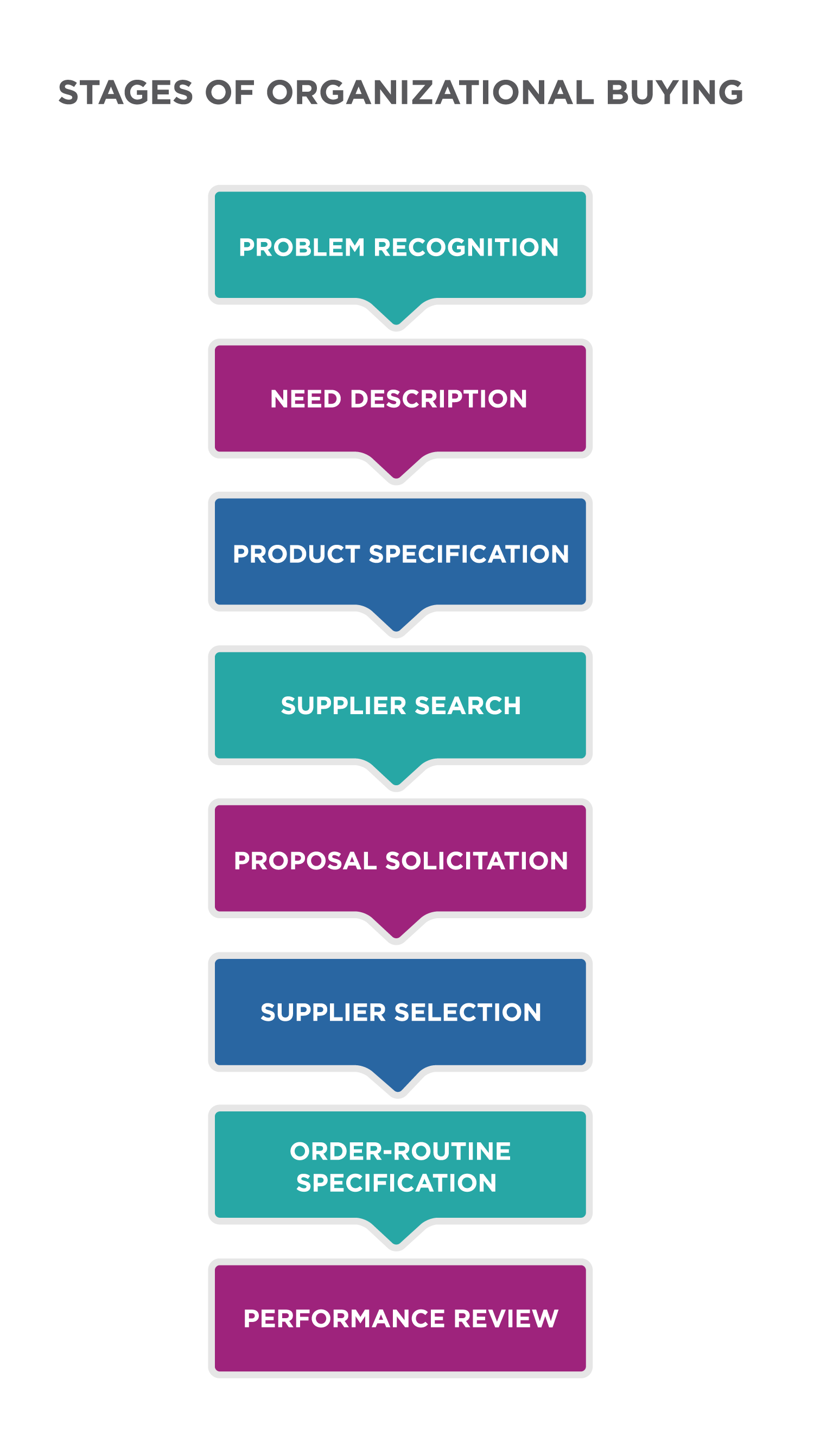Reading: Competitive Bidding
When we discussed buyer behaviour, we identified the stages that organizations go through to make a purchase decision. When it comes to pricing consideration, two of these stages are especially relevant: proposal solicitation and supplier selection.
You will remember that during the proposal solicitation stage of the process, qualified suppliers are invited to submit proposals. Those vendors will each craft a detailed proposal outlining what the provider can offer to address the buyer’s needs, along with product specifications, timing, and pricing. These proposals are submitted to the buying organization, which will review them during the supplier selection stage of the process. During this stage the buyer completes a thorough review of the proposals submitted, scores the proposals, and often narrows down the list of vendors to the highest-scoring proposals. This shortlist is marked for “further negotiation,” which may include negotiating product quantity, specifications, pricing, timing, delivery, and other terms of sale. This process is called a competitive bid process.
A competitive bid is a procurement process in which bids from competing suppliers are solicited. The competitive bid process generally advertises the requirements and specifications of solutions and invites suppliers to provide a proposal about how they will meet the need and at what price. Together, the steps of requesting proposals from multiple vendors, evaluating the proposals by comparing them against one another, and negotiating the terms constitute a competitive bid process.
Let’s consider a very simple example of the differences between the competitive pricing for a B2C sale and a competitive bid in a B2B sale.
Imagine that you are traveling to Toronto and you want to find a low-cost hotel room. There are a number of Web sites that allow you to compare costs of different hotels. You are able to select the location and dates for your stay, compare information about the available hotels, and see the price for each option. This enables you, as a buyer, to select and reserve your room without ever having direct contact with the hotel.
If you are planning to hold a large conference at a hotel in Toronto, then the process if very different. The meeting planner will generally do some research to identify all of the hotels in the area that have facilities with sufficient capacity to accommodate the conference. Then the planner will issue a request for proposals (RFP) to all of the possible venues. The RFP will provide information to the hotel about the conference needs: number of expected attendees, meeting space required, hotel rooms required, and any special requirements (such as catering, etc.). Each of the hotels has the opportunity to craft and submit a proposal. The hotels have a good sense of what their competitors offer, so they will describe what is unique about their facilities and available services. They will also price their proposal according to how confident they are that their facilities and services can support the value. Unlike the consumer, the business will be offered a full, customized package with pricing that will include a hotel room rate for a defined block of rooms, a minimum dollar amount that must be spent on food and beverages, and pricing for other items. If the food-and-beverage expense is high, then the hotel might waive the cost of the meeting-space rental. Once the business has reviewed the proposals, it might negotiate on any of these terms or ask to have some of the services that will incur a fee, such as Internet access, included in the package.
The competitive bid process creates an opportunity to tailor pricing for a specific customer’s needs, based on the value is provided relative to a specific set of competitors.



